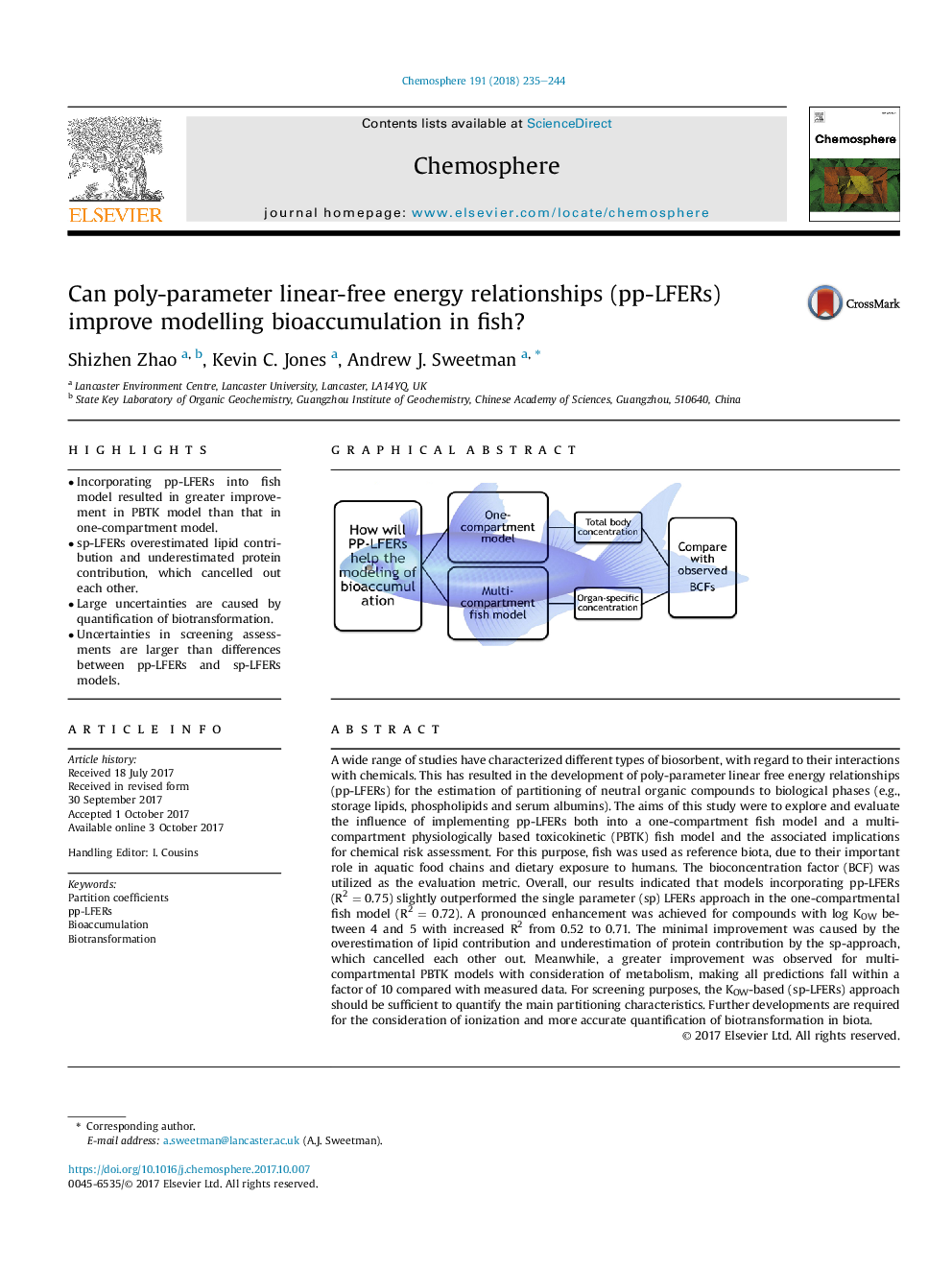| کد مقاله | کد نشریه | سال انتشار | مقاله انگلیسی | نسخه تمام متن |
|---|---|---|---|---|
| 5745709 | 1618780 | 2018 | 10 صفحه PDF | دانلود رایگان |

- Incorporating pp-LFERs into fish model resulted in greater improvement in PBTK model than that in one-compartment model.
- sp-LFERs overestimated lipid contribution and underestimated protein contribution, which cancelled out each other.
- Large uncertainties are caused by quantification of biotransformation.
- Uncertainties in screening assessments are larger than differences between pp-LFERs and sp-LFERs models.
A wide range of studies have characterized different types of biosorbent, with regard to their interactions with chemicals. This has resulted in the development of poly-parameter linear free energy relationships (pp-LFERs) for the estimation of partitioning of neutral organic compounds to biological phases (e.g., storage lipids, phospholipids and serum albumins). The aims of this study were to explore and evaluate the influence of implementing pp-LFERs both into a one-compartment fish model and a multi-compartment physiologically based toxicokinetic (PBTK) fish model and the associated implications for chemical risk assessment. For this purpose, fish was used as reference biota, due to their important role in aquatic food chains and dietary exposure to humans. The bioconcentration factor (BCF) was utilized as the evaluation metric. Overall, our results indicated that models incorporating pp-LFERs (R2Â =Â 0.75) slightly outperformed the single parameter (sp) LFERs approach in the one-compartmental fish model (R2Â =Â 0.72). A pronounced enhancement was achieved for compounds with log KOW between 4 and 5 with increased R2 from 0.52 to 0.71. The minimal improvement was caused by the overestimation of lipid contribution and underestimation of protein contribution by the sp-approach, which cancelled each other out. Meanwhile, a greater improvement was observed for multi-compartmental PBTK models with consideration of metabolism, making all predictions fall within a factor of 10 compared with measured data. For screening purposes, the KOW-based (sp-LFERs) approach should be sufficient to quantify the main partitioning characteristics. Further developments are required for the consideration of ionization and more accurate quantification of biotransformation in biota.
299
Journal: Chemosphere - Volume 191, January 2018, Pages 235-244